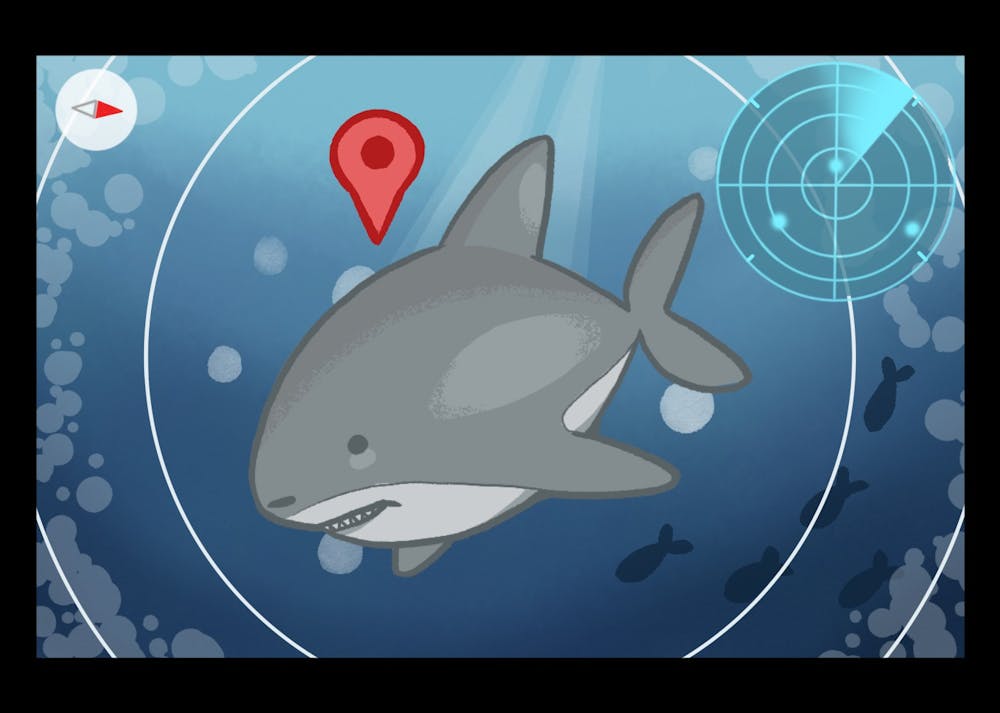Being located in the middle of the desert, marine biology is not the first thing associated with ASU. However, 200 miles from the nearest ocean, ASU is still making monumental advancements in shark conservation technology.
With nearly 73 million sharks killed annually for their fins, and 75% of shark species currently threatened with extinction, the protection of sharks is more crucial now than ever.
At ASU, The Sulikowski Shark and Fish Conservation Lab is led by James Sulikowski, a professor and associate director in the School of Mathematical and Natural Sciences and senior Global Futures scientist. The lab takes a holistic approach to shark conservation and understanding their important role in the ocean.
"Without sharks, the ocean wouldn't be able to mitigate climate change. Our ecosystems would be out of balance," said Sulikowski.
"They help to keep the balance in an ecosystem, so keeping their prey in check. They also act as cleaners of their habitats, picking off any dead, dying or sick organisms that are in their environment," said Beckah Campbell, a Ph.D. candidate working with Sulikowski.
"In the past, most studies on shark reproduction have been done lethally, where animals had to be sacrificed in order to study how they reproduce," said Campbell.
Thus, the birth-alert tag, or BAT, was created to track a shark's pregnancy using nonlethal techniques.
"We developed that, along with things like underwater ultrasounds, topside ultrasounds (and) working with different companies in order to redefine and perfect them," said Sulikowski.
This combination of different technologies, like underwater ultrasounds, external satellite tags and the birth alert tag, allows Sulikowski and his team to understand where and when their sharks are giving birth.
"We know that she's pregnant with the ultrasounds, so that technology is great. We can put an external tag on her to track her movements and see where she goes. And the final piece of that puzzle was that birth tag, and finding out where she actually gives birth. So now we can protect mom," said Sulikowski.
Brooke Anderson is also a Ph.D. candidate working with Sulikowski. She explains how the BAT works when it it is placed in the shark.
"The birth tag is equipped with a wet-dry sensor, so when the tag is dry to begin with it's off. When it's triggered that it's wet, such as when it's inserted in the shark's uterus, it goes into a standby mode. And then when the shark gives birth, that egg will come out with all of those pups," said Anderson.
The "egg" or the BAT then transmits the exact location it exits the mom's body to the scientists on land. This information helps scientists understand shark reproduction cycles, which is key to protecting the corridors in which they give birth.
"Baby sharks are the most vulnerable life stage of all sharks, even large predatory species. The baby still starts off vulnerable. They have predators and they have the highest mortality rate," said Anderson.
As with humans, there will always be variability in nature. It was been difficult for scientists to simply predict the places in which sharks will give birth before technology like the BAT was put into practice.
"Because the climates are changing, sharks like particular habitats to give birth in, and those nursery grounds are shifting," said Sulikowski.
With this information, scientists are able to come up with specific solutions on how to protect shark pups and their habitats.
READ MORE: ASU shark expert is teaching people how to save his favorite animals
"With every piece of data we collect, the stronger our case is for putting in actual conservation measures around those areas," said Campbell.
According to Anderson, the scalloped hammerhead shark is an endangered species, so understanding the environment where they give birth and being able to translate that into fishing closure areas for birthing habitats could help promote survival of baby sharks.
"With shark science, it's a balance between protecting the sharks and working with people who use those habitats for their livelihood like fisheries," said Campbell.
For most, sharks are predators without remorse. To Sulikowski and his team, sharks are mothers and babies that play essential roles in their unique environments.
"It goes back to protecting mom. Most people don't think of sharks as moms. They don't think about sharks as moms carrying the next generation. That next generation is what we need to help global climate change, to protect ecosystems, all those things," said Sulikowski.
With empathy for the apex predators, Sulikowski and his team are rethinking the ways in which scientists research and protect sharks in their natural habitats.
Edited by Annie Graziano, Reagan Priest and Caera Learmonth.
Reach the reporter at brenna.gauchat@gmail.com and follow @brenngauchat on Twitter.
Like The State Press on Facebook and follow @statepress on Twitter.
Continue supporting student journalism and
donate to The State Press today.




